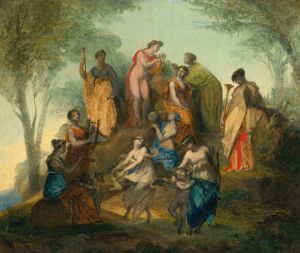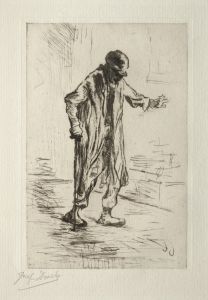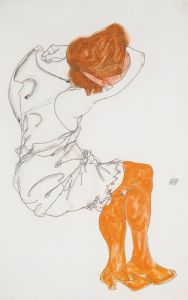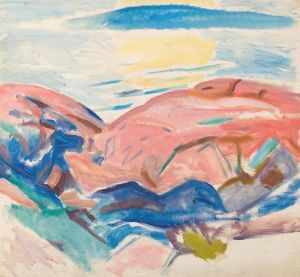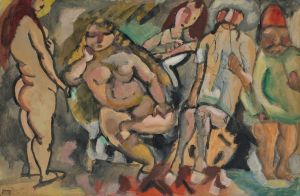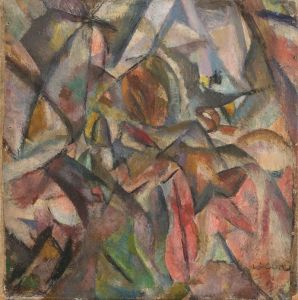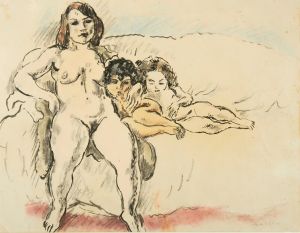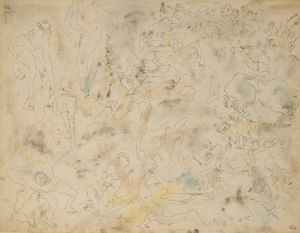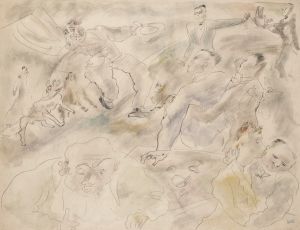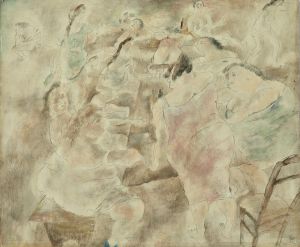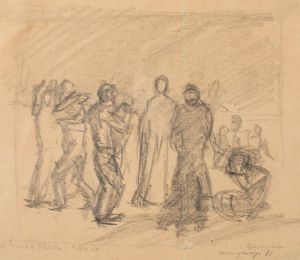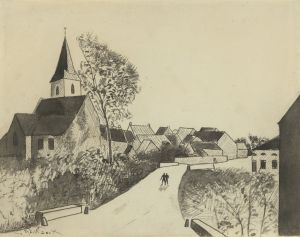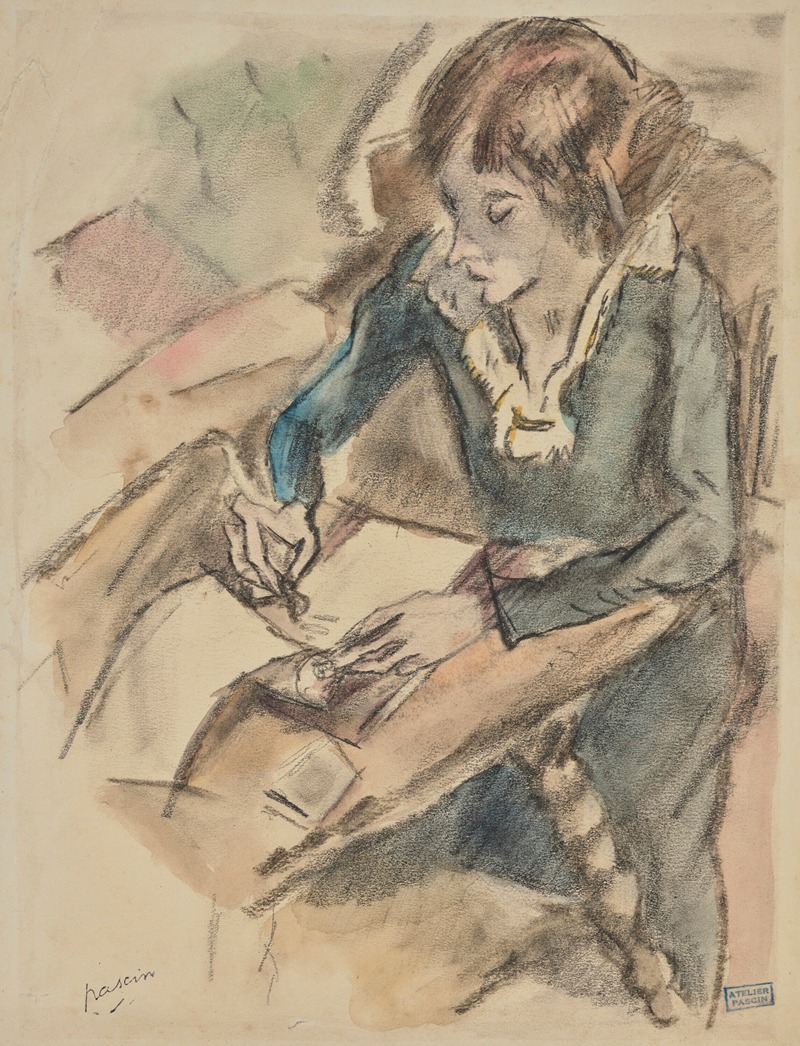
Femme écrivant
A hand-painted replica of Jules Pascin’s masterpiece Femme écrivant, meticulously crafted by professional artists to capture the true essence of the original. Each piece is created with museum-quality canvas and rare mineral pigments, carefully painted by experienced artists with delicate brushstrokes and rich, layered colors to perfectly recreate the texture of the original artwork. Unlike machine-printed reproductions, this hand-painted version brings the painting to life, infused with the artist’s emotions and skill in every stroke. Whether for personal collection or home decoration, it instantly elevates the artistic atmosphere of any space.
Jules Pascin, a Bulgarian-born artist known for his association with the École de Paris, created numerous works throughout his career that captured intimate and often melancholic scenes. One of his notable paintings, Femme écrivant (translated as "Woman Writing"), exemplifies his characteristic style, which blends elements of Impressionism and Expressionism.
Femme écrivant depicts a woman seated at a table, engrossed in the act of writing. The composition is intimate, focusing on the solitary figure in a quiet moment of reflection or concentration. Pascin's use of soft, muted tones and fluid brushstrokes lends the painting a dreamlike quality, emphasizing the emotional depth of the scene rather than precise detail. The subject's posture and facial expression suggest introspection, a recurring theme in Pascin's work, which often explored the inner lives of his subjects.
Jules Pascin, often referred to as the "Prince of Montparnasse," was a prominent figure in the Parisian art scene during the early 20th century. Born Julius Mordecai Pincas in Vidin, Bulgaria, in 1885, he traveled extensively before settling in Paris in 1905. There, he became associated with a circle of artists and writers who were part of the École de Paris, a loosely affiliated group of international artists working in the French capital. Pascin's work often focused on portraits, nudes, and scenes of everyday life, characterized by a sensitivity to human emotion and a distinctive, ethereal aesthetic.
While Femme écrivant is not as widely discussed as some of Pascin's other works, it reflects his ability to capture the subtleties of human experience. The painting is believed to have been created during the 1920s, a period when Pascin was at the height of his artistic career. During this time, he produced numerous portraits of women, often portraying them in moments of solitude or quiet activity. These works are celebrated for their psychological depth and the tenderness with which Pascin approached his subjects.
Pascin's life was marked by personal struggles, including bouts of depression and alcoholism, which ultimately led to his tragic death by suicide in 1930. Despite his relatively short life, his artistic legacy endures, and his works continue to be exhibited in major museums and galleries worldwide.
Femme écrivant remains a testament to Pascin's skill as a painter and his ability to convey the complexities of human emotion through his art. The painting is a poignant example of his unique style and his enduring fascination with the human condition.





